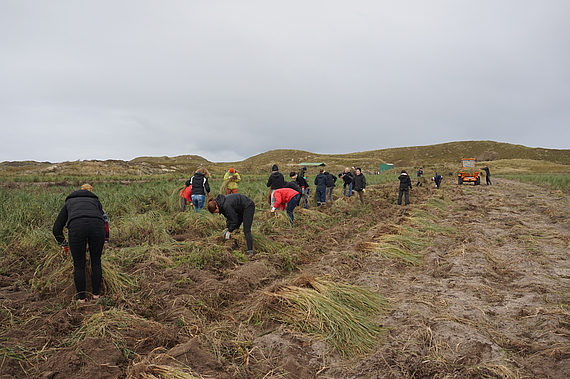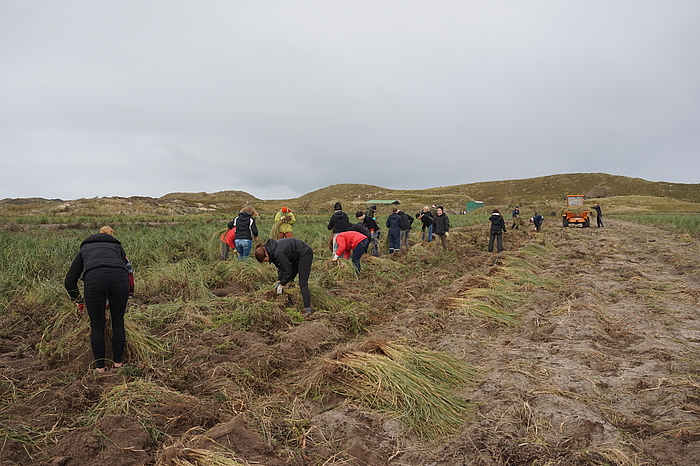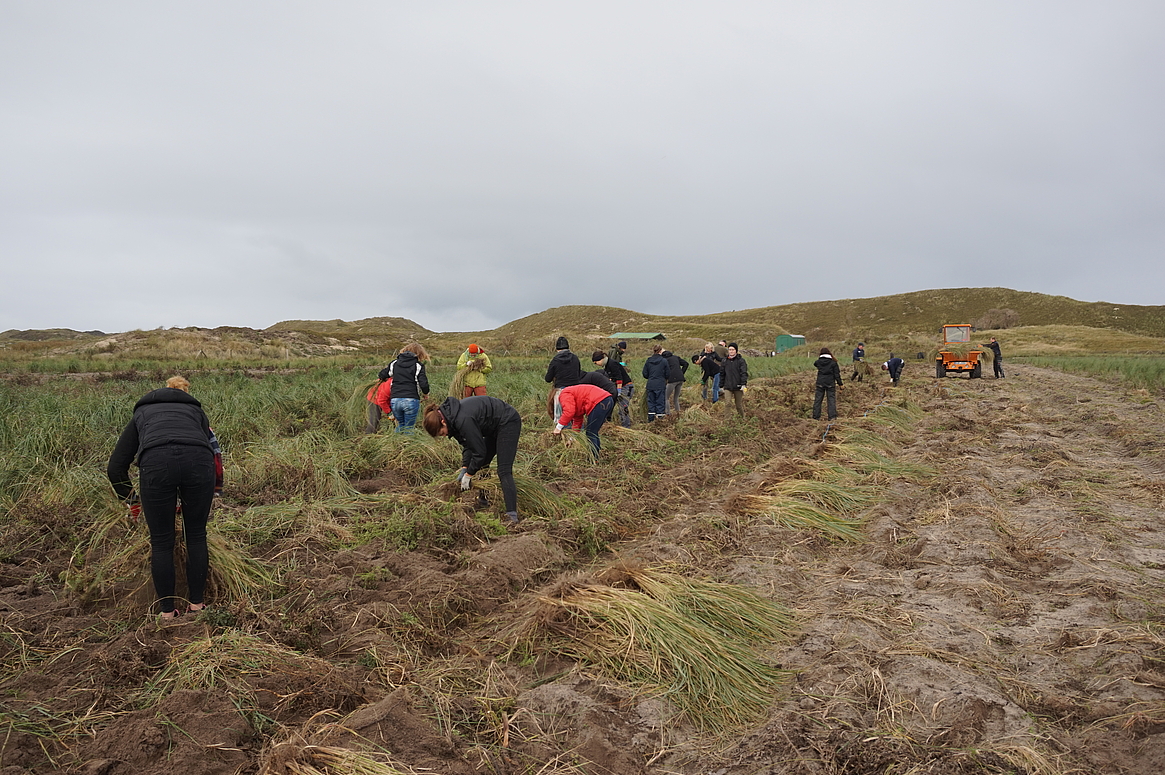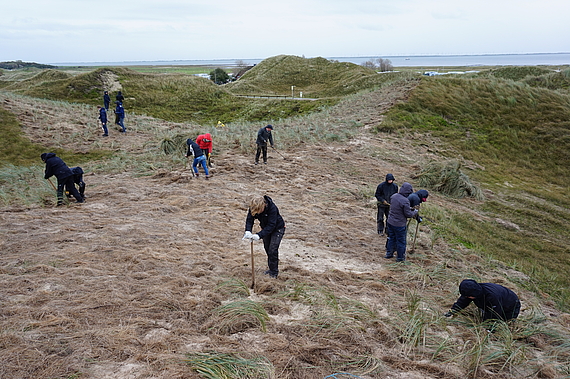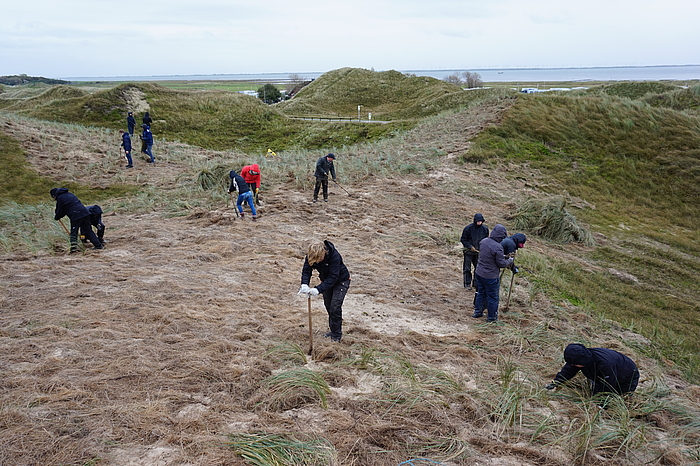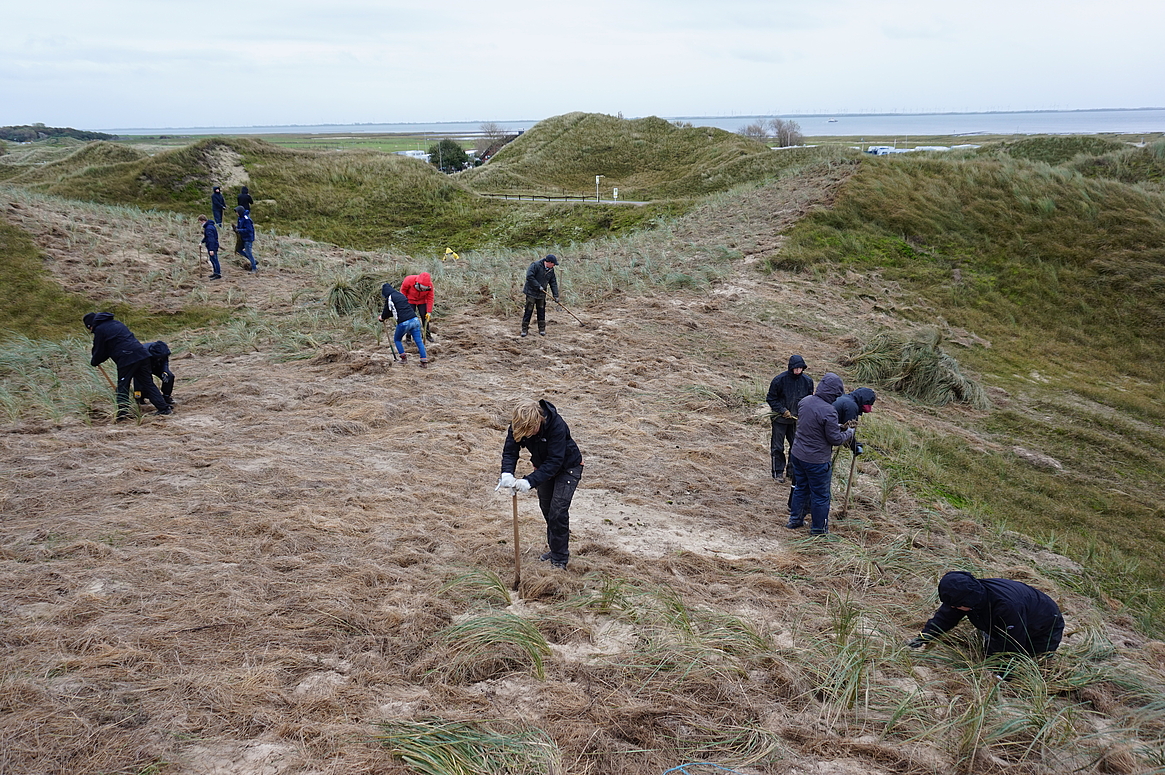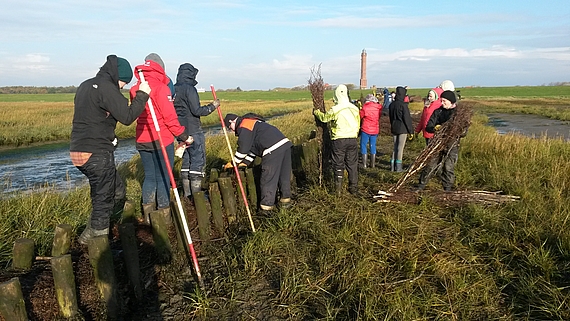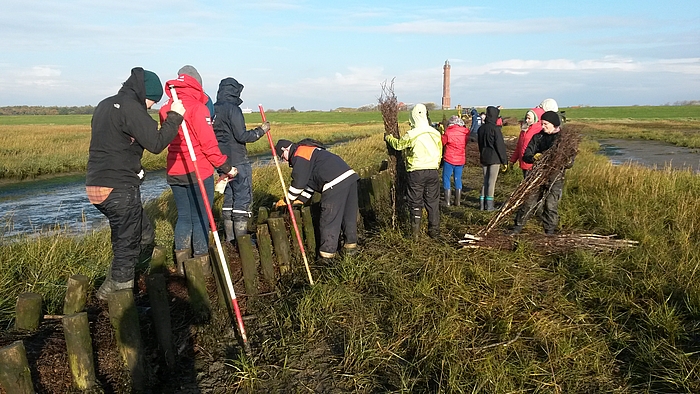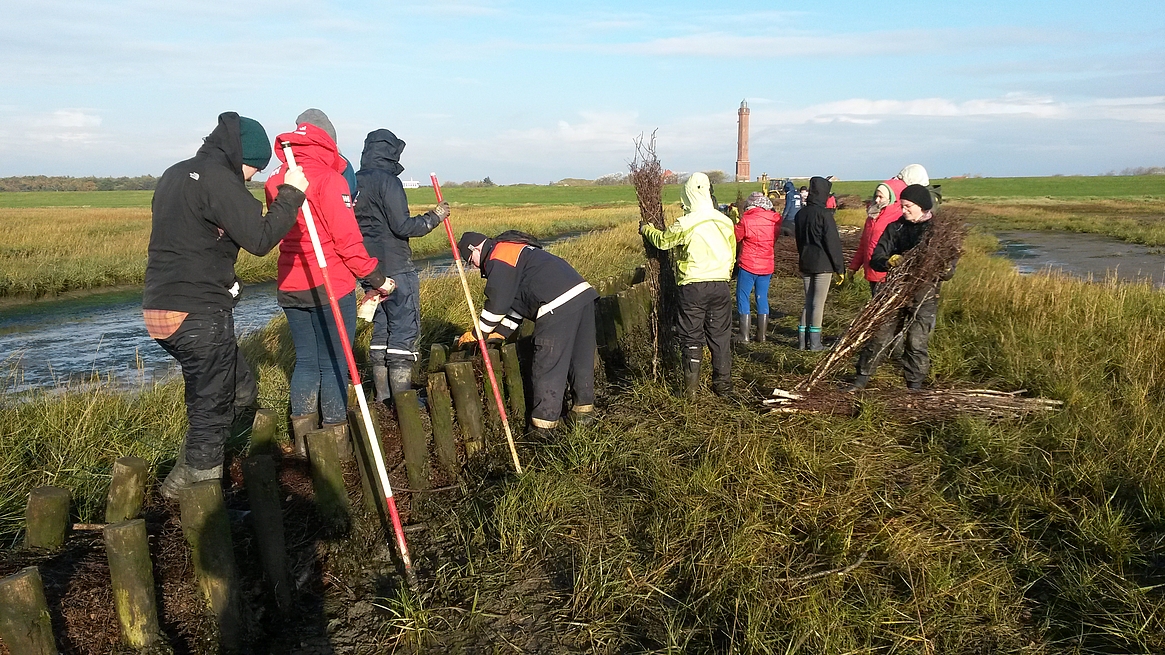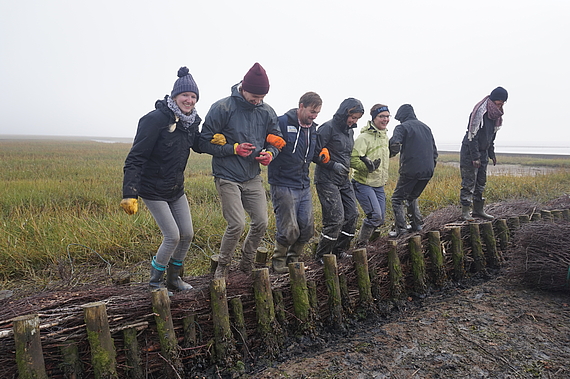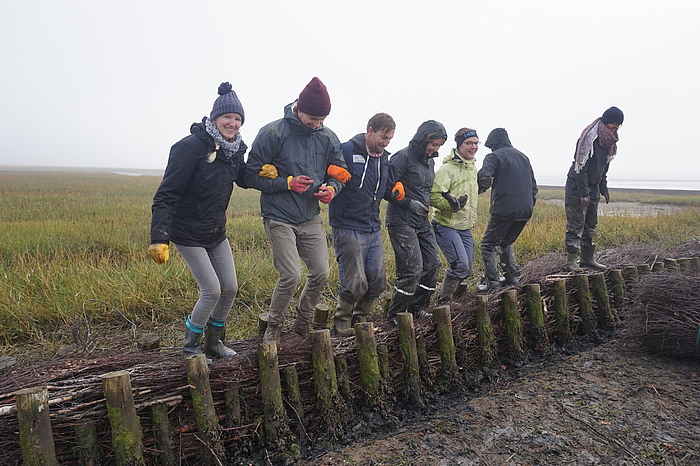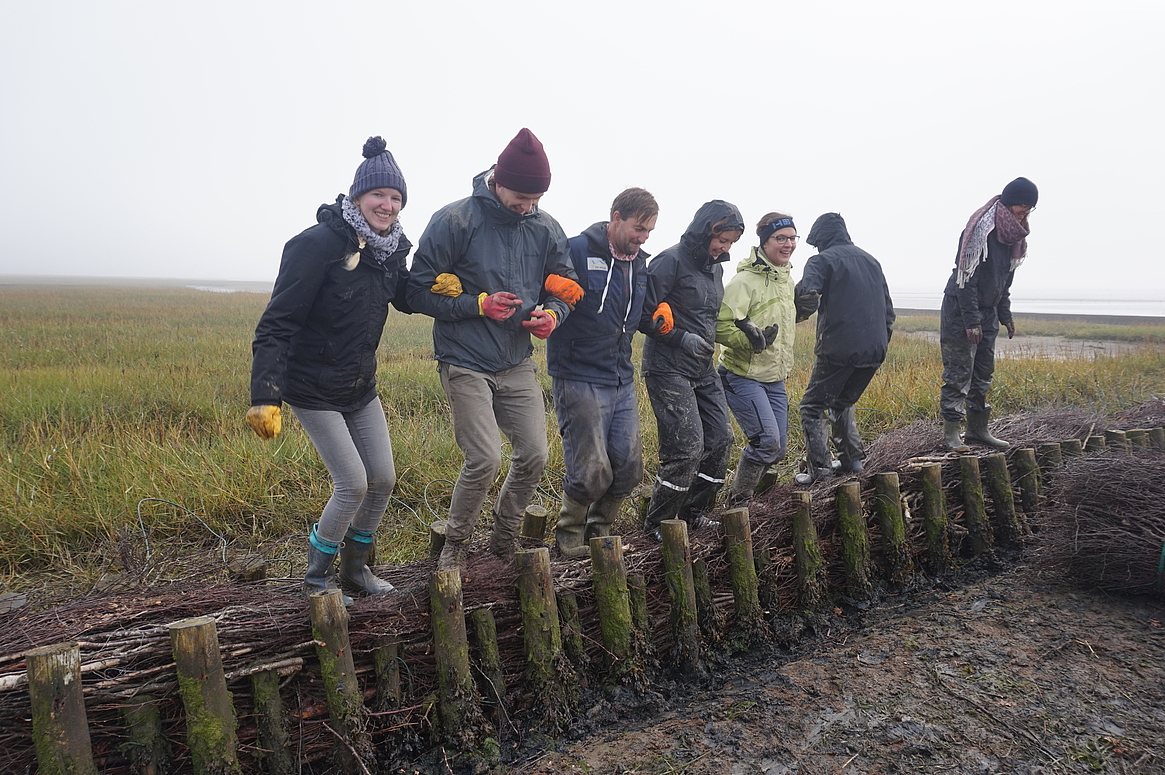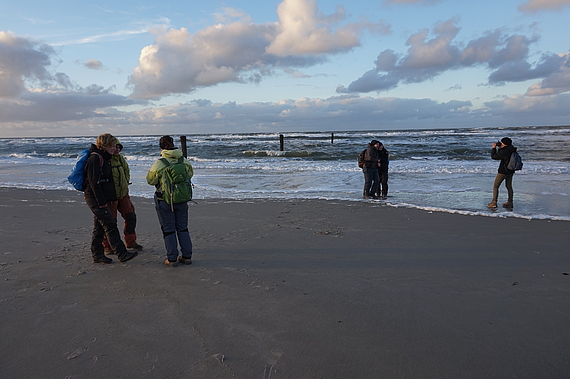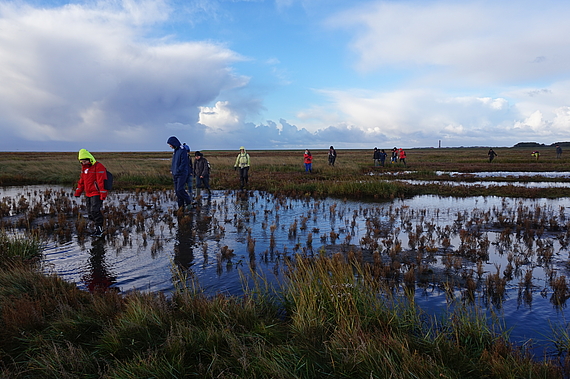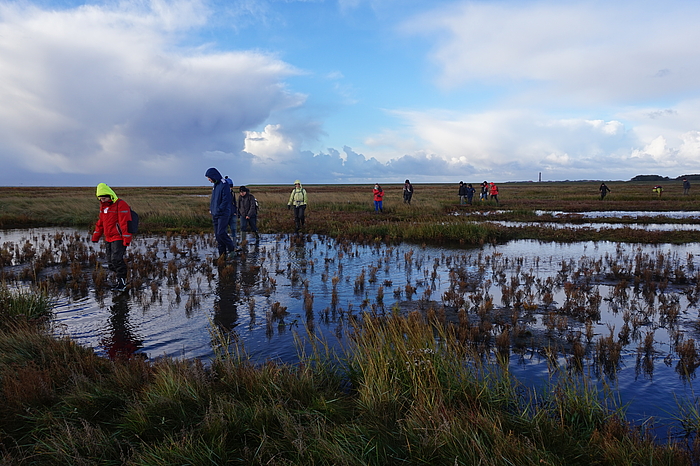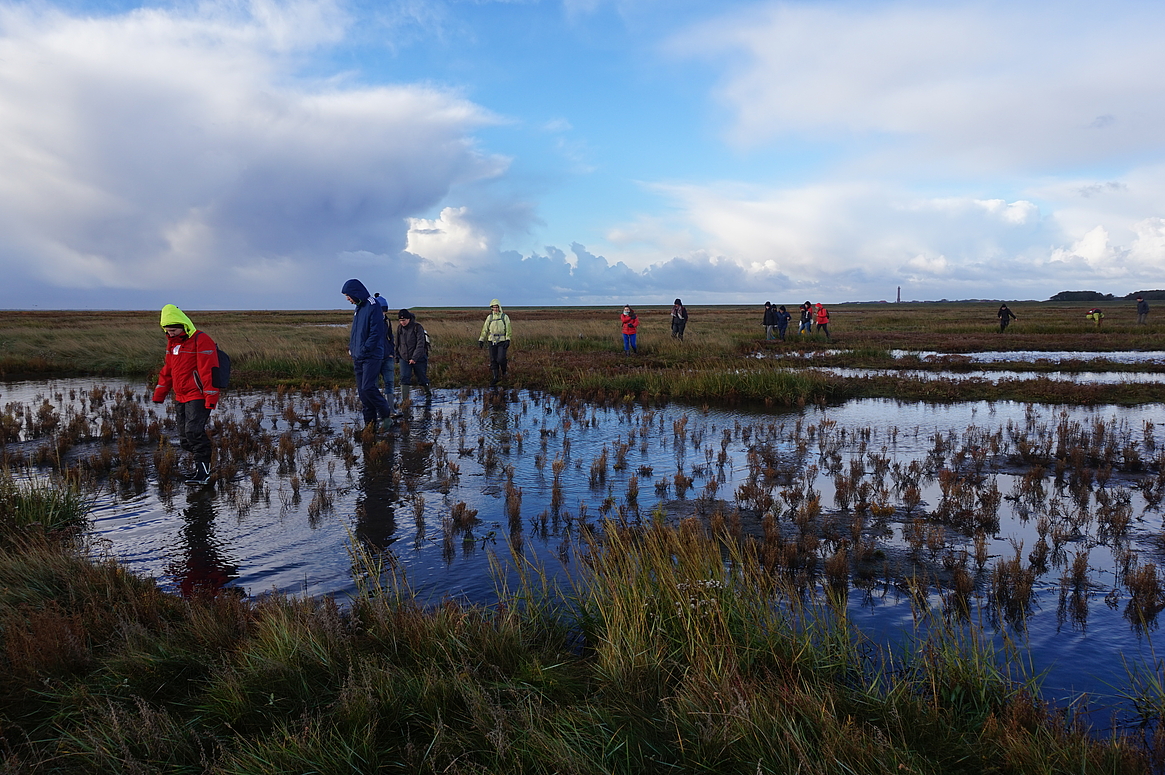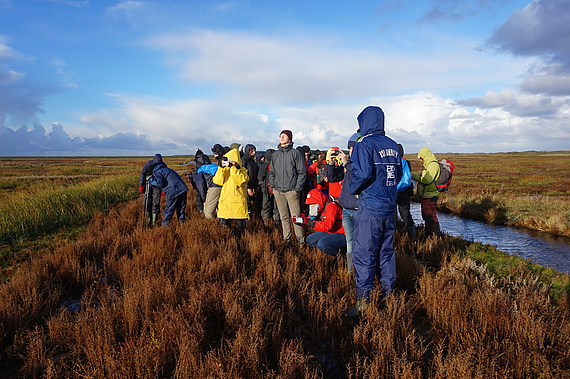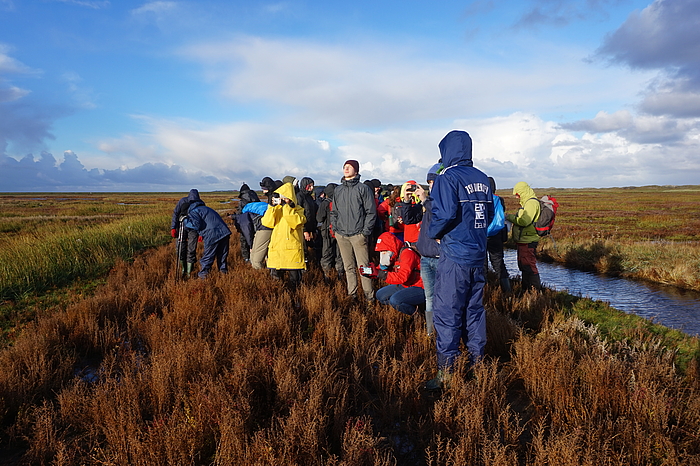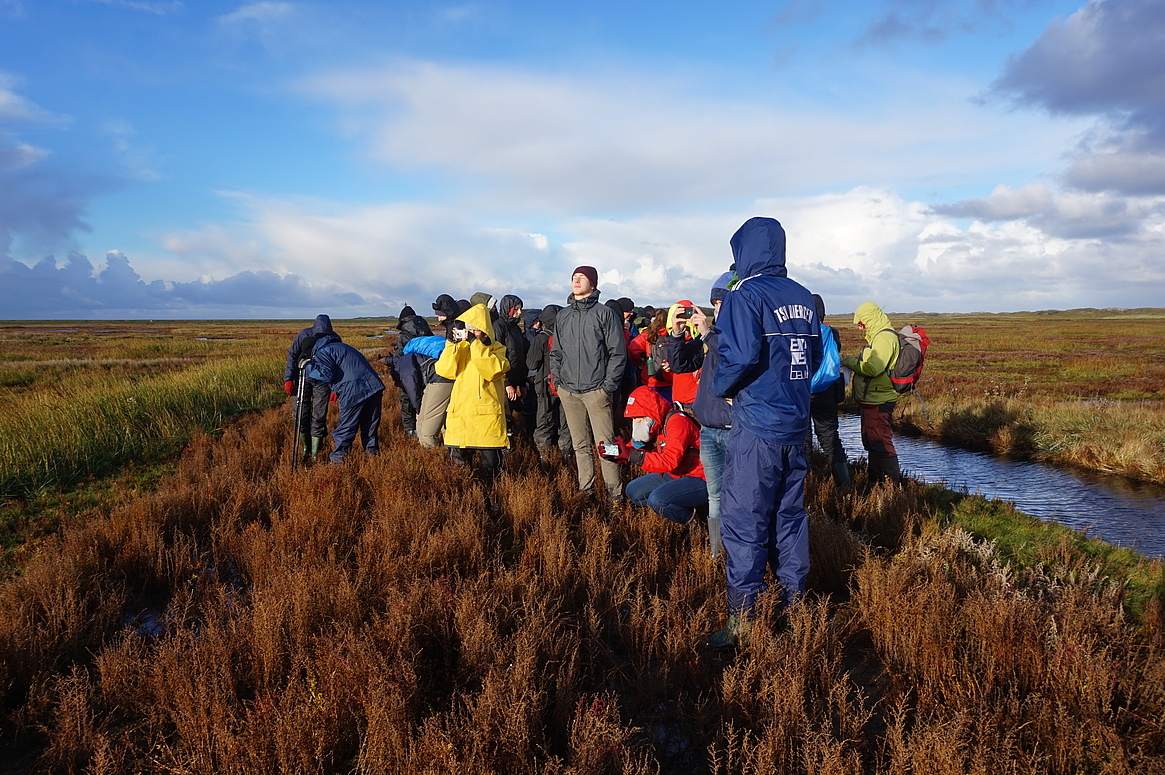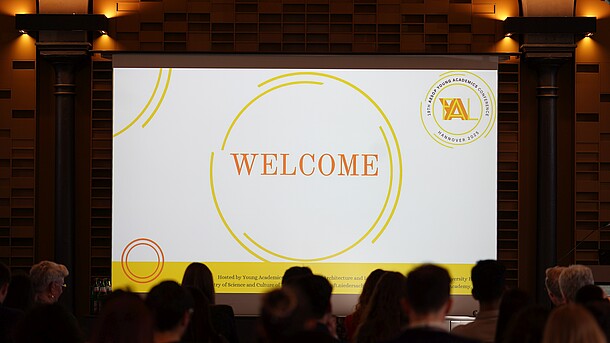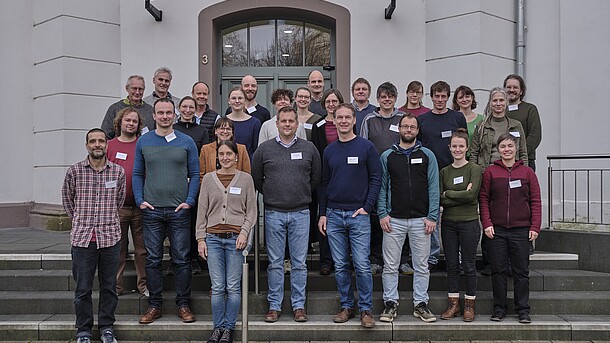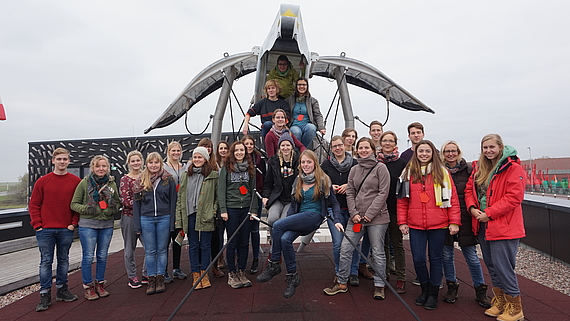
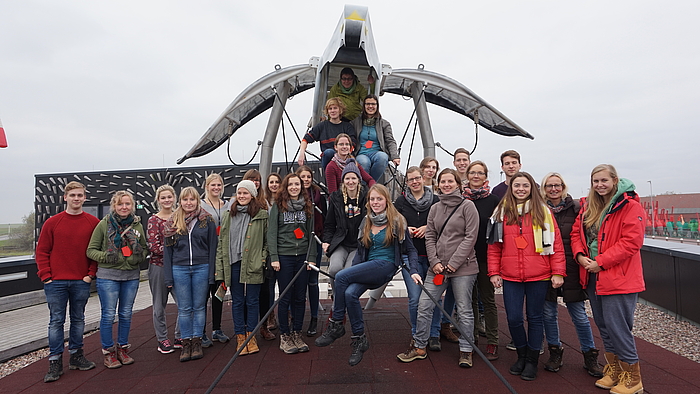
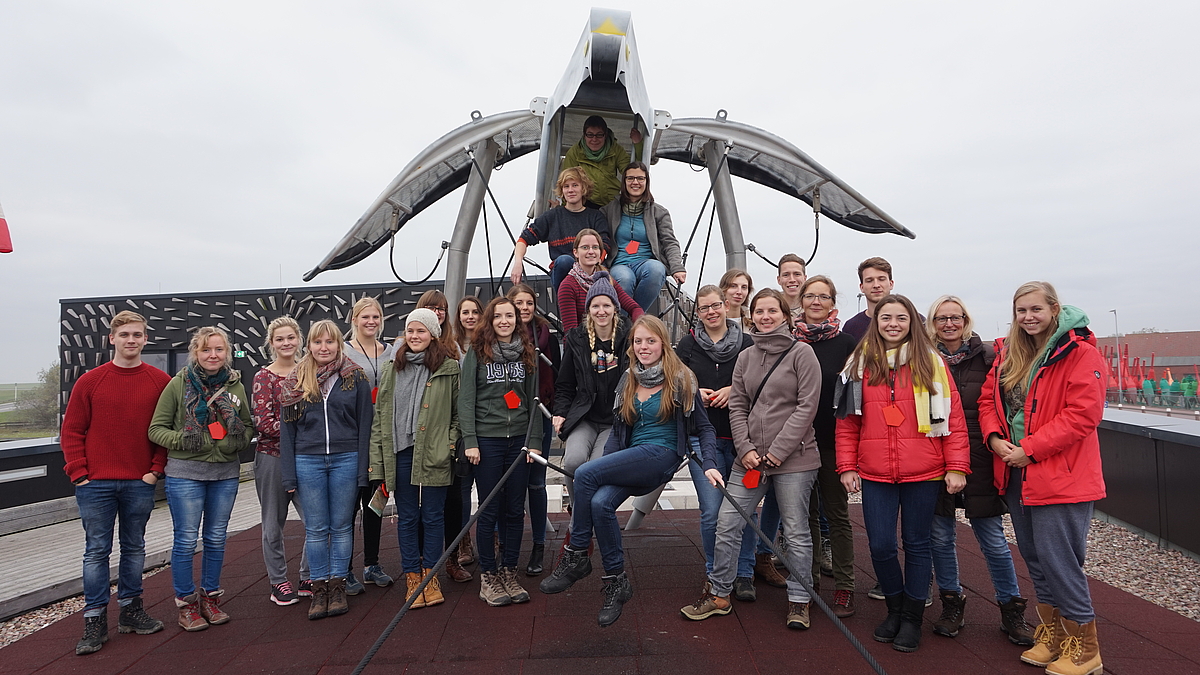
From 31 October to 4 November 2016, the IUP's teaching and research area of engineering biology held its annual engineering biology construction week in cooperation with the Lower Saxony State Agency for Water Management, Coastal and Nature Conservation (NLWKN), this year on Norderney. During the five-day excursion, the students were able to learn about various engineering-biological construction methods for coastal protection and carry them out themselves. In addition, nature conservation in the Wadden Sea was also addressed and in this way the field of tension between coasts and nature conservation was illuminated.
In the national park house "Watt Welten", the students were able to learn about the Wadden Sea World Heritage Site and gain a first insight into nature and coastal protection issues. It was deepened through vivid examples during a guided tour of the island lasting several hours with National Park warden Nico Erdmann.
The practical implementation of the engineering-biological measures, such as the extraction of beach grass and its spreading as stalk cuttings in the dunes or the construction of bush slopes in the dyke foreland, was presented by some NLWKN employees. The students were then able to harvest beach grass in the NLWKN's planting field under the supervision of NLWKN staff. The harvested stalk cuttings of beach oat were then used to secure some protective dunes. The dunes, some of which had been severely destroyed due to the enormous occurrence of rabbits on Norderney, were reshaped and then replanted by the students with the help of "stalk cuttings". In the south of the island, the students were able to participate in the repair of the bush slopes in the foreland of the dyke and, after an introduction to the construction method, also renewed the slopes themselves.
The salt marshes in the east of the island were again part of the engineering biology construction week. Mr Linders, whose planning office Eco Plan from Leer had planned and implemented the renaturation of a section of salt marsh on the Ostheller in 2015, presented his project. Through a joint inspection of the renaturalised salt marshes and a correspondingly coordinated presentation on the previous evening, the theoretical and practical challenges and experiences that salt marsh renaturation entails could be discussed. In addition, the first visible developments and successes of the renaturation were examined, which again deepened the discussion on coastal protection, nature conservation, the importance of salt marshes and the possibilities of engineering biology.
